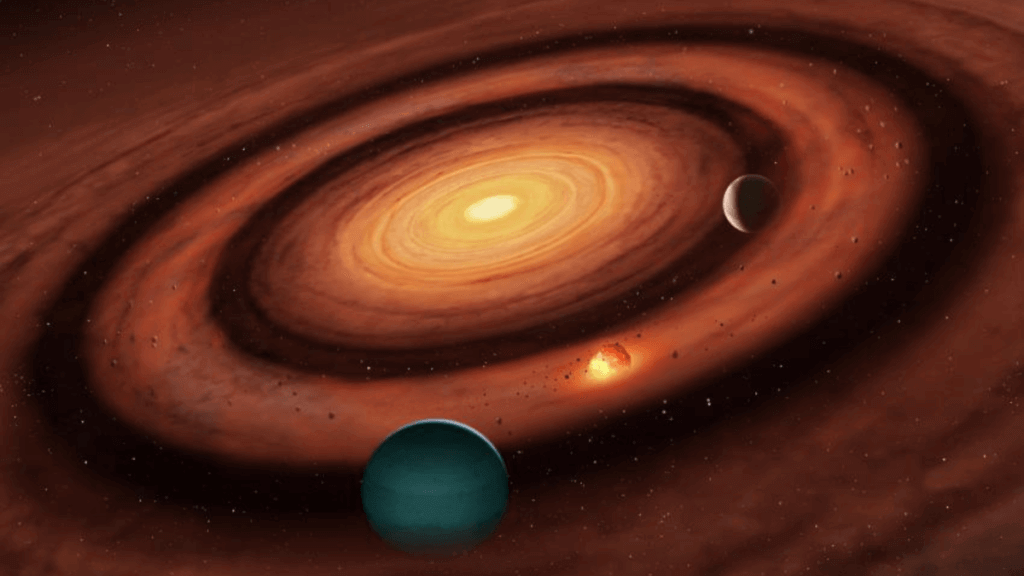Smaller planets might be born when gas and dust is squeezed between larger worlds like the filling in a cosmic sandwich.
The newly suggested process — dubbed “sandwiched planet formation” — would occur in the massive disks of planet-birthing gas and dust that swirl around stars in their infancy called “protoplanetary disks.” Around 4.5 billion years ago, the solar system itself would have existed as one such disk around the infant sun from which the planets arose.
This new theory of planet birth was developed by researchers at the University of Warwick. According to sandwiched planet formation, two large planets already present in the protoplanetary disk, restricting the flow of dust inwards through the flattened cloud of gas and dust. This results in matter collecting between the planets with dense patches of the protoplanetary disks collapsing to birth planets. This gathering of gas and dust between the original two large planets would then form a middle planet smaller than its two outer companions.
Related: ‘Planet factories’ may explain mysterious diversity of super-Earth alien worlds
The theory put forward by the team still needs to be confirmed, but if it is, it could explain how smaller planets like Mars are born. It could even account for the creation of planets like Uranus, which themselves are quite large but are still surrounded by even more massive worlds.
“In the last decade, observations have revealed that rings and gaps exist in protoplanetary disks. The gaps are where we expect planets to be, and we know from theory work that planets cause dust rings to form just exterior to them,” University of Warwick Department of Physics Associate Professor Farzana Meru said in a statement. “What exactly is happening in those rings poses an important question to astronomers around the world.”
Meru explained that the sandwiched planet formation differs considerably from currently favored models of planet formation that see planets form in sequence, starting at the inside of protoplanetary disks before moving to their outer regions, in addition to suggesting planets should get more massive further out in the disk.
“What is also really interesting is that there are examples that we have found from exoplanet observations that actually show this sandwiched planet architecture —
here the middle planet is less massive than its neighbors; it is a reasonable proportion of the systems, too,” Meru continued.
The University of Warwick scientist highlighted the fact that the field of planet formation has undergone considerable growth over the last ten years. This is partially thanks to high-resolution images of protoplanetary disks that have been collected by sophisticated telescopes like the Atacama Large Millimeter/submillimeter Array, a system of 66 12-meter radio antennas located in the Atacama Desert of northern Chile that form a single radio telescope.
The growth of planet formation as a field of science has allowed scientists to start suggesting new “out there” models of planet formation based on the evidence they see in both protoplanetary disk images and from observations of fully formed exoplanets.
“These images have given us clues about how planets form and evolve,” Meru concluded. “It’s exciting to be at the forefront of this research.”
The team presented their findings at the National Astronomy Meeting 2023 in Cardiff, U.K., which runs between July 3 and July 7. The research has also been accepted for publication in a future issue of the Monthly Notices of the Royal Astronomical Society.

